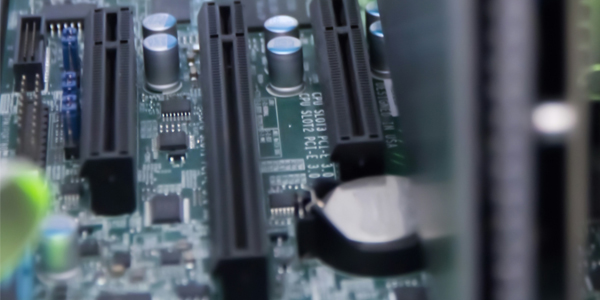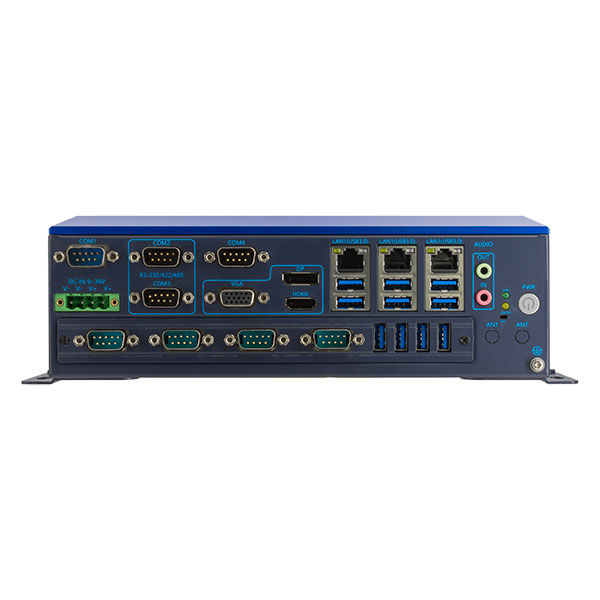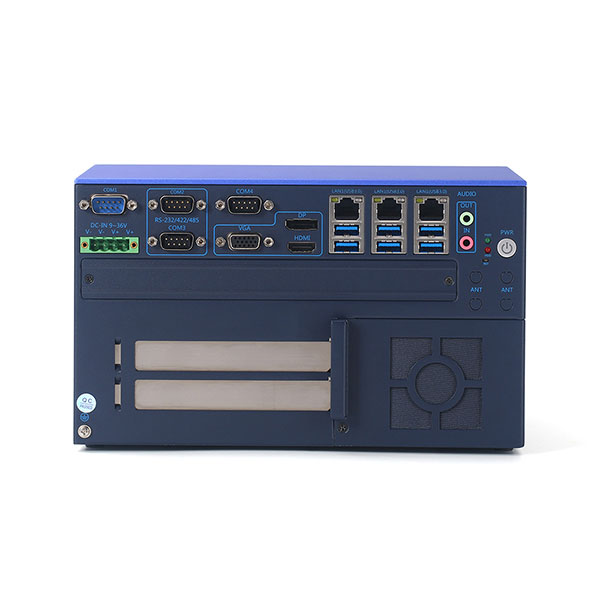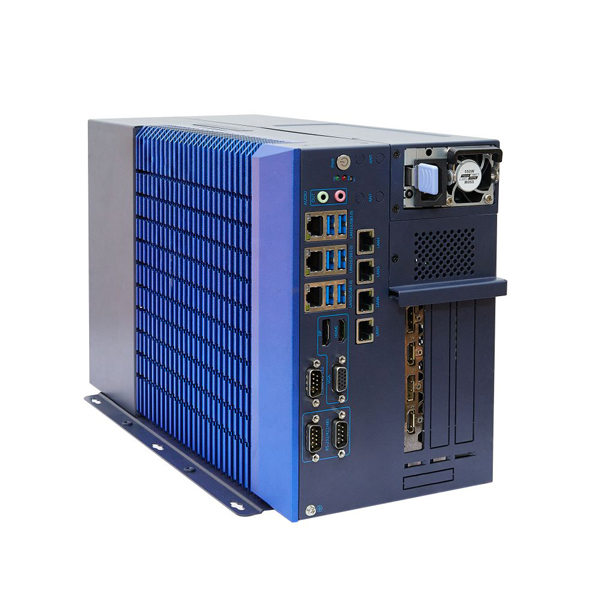
PCIe, or Peripheral Component Interconnect Express, is a fast interface. It helps connect parts like GPUs and storage for better speed. Industrial PCs use PCIe for quick input and output connections. This ensures low delay and high data transfer rates. It is important for tasks like automation and data handling.
Key Takeaways
PCIe, short for Peripheral Component Interconnect Express, helps industrial PCs transfer data quickly. It connects parts like GPUs and storage for fast communication.
Newer PCIe versions, like PCIe 6.0, are super fast. They can reach speeds up to 64 GT/s, perfect for tasks like AI and automation.
PCIe is built to allow easy upgrades. It also works with older devices, so you don’t need to replace everything.
What Is PCIe?
What Does Peripheral Component Interconnect Express Mean?
Peripheral Component Interconnect Express, or PCIe, is a fast connection type. It links your computer's motherboard to important parts. These parts include GPUs, SSDs, and network cards. PCIe helps these devices talk to each other smoothly. Unlike older systems, PCIe uses a serial design. This gives each device its own connection, avoiding slowdowns. This setup means faster data transfers and less waiting time. PCIe also has a standard design, making upgrades simple.
Main Features of PCI Express
PCIe has many features that make it great for computers. Here are some key ones:
Super Fast Speeds: PCIe 6.0 can transfer up to 64 GT/s per lane. In x16 setups, this equals 256 GB/s total bandwidth.
PAM-4 Signaling: This method doubles speed without needing a faster clock.
Error Fixing: Forward Error Correction (FEC) finds and fixes mistakes during data transfer.
These features let PCIe handle big data quickly and reliably. Its design also makes upgrading your system easy as tech improves.
Why PCIe Matters in Today's Computers
PCIe is very important in modern computers. Its speed helps with tasks like gaming, video editing, and automation. It supports memory sharing and virtualization for complex systems. PCIe also allows smart resource sharing for better performance. Whether for gaming or industrial PCs, PCIe gives the speed and flexibility needed for today’s demands.
PCIe vs Other Expansion Interfaces
Comparison with Older Standards (PCI, AGP, ISA)
PCIe replaced older systems like PCI, AGP, and ISA. These older systems shared bandwidth, slowing down when many devices connected. PCIe uses a direct connection for each device. This stops slowdowns and speeds up data transfer. For example, PCI's top speed was 133 MB/s. PCIe Gen 4 can reach 64 GB/s in x16 setups. This big jump makes PCIe perfect for modern industrial PCs.
PCIe vs USB or Thunderbolt in Industrial PCs
When comparing PCIe to other expansion interfaces such as USB and Thunderbolt, PCIe outperforms them, particularly for internal connections within industrial PCs. While USB and Thunderbolt are commonly used for peripheral devices like external hard drives and monitors, PCIe is specifically designed for high-speed, high-bandwidth data transfer between components like GPUs, storage drives, and network cards. This makes PCIe essential for modern industrial computing needs, such as real-time data processing, AI applications, and automation systems.
Here’s a comparison of the top speeds of common expansion interfaces:
Interface | Top Speed |
|---|---|
USB 2.0 | 480 Mbps |
USB 3.0 | 5 Gbps |
USB 3.1 | 10 Gbps |
USB 3.2 | 20 Gbps |
Thunderbolt 2 | 20 Gbps |
Thunderbolt 3 | 40 Gbps |

PCIe can reach speeds of 256 GB/s in x16 setups (PCIe 6.0). This makes it great for tasks like AI and fast data work in industrial PCs.
Why PCIe Is Best for Industrial Use
PCIe is the top choice for industrial PCs. It works with powerful cards like GPUs and network adapters. These help handle big data jobs. PCIe can grow with new tech, making upgrades easy. It also handles tough conditions like vibration and heat. The hot-swap feature lets you change parts without turning off the system. With six versions proving its reliability, PCIe is key to industrial computing.
How PCIe Works
PCIe Lanes and PCIe Slots
PCIe lanes and slots help connect parts to your PC. Each lane has two wire pairs: one sends, one receives data. This allows data to move both ways at the same time. Lanes come in sizes like x1, x4, x8, and x16. More lanes mean faster data transfer, like more lanes on a highway let more cars pass.
PCIe slots hold devices on the motherboard. Slots come in sizes like x1 or x16, but size doesn’t always match speed. For example, a x16 slot might only work at x8 speed. This design helps different devices work together while keeping data fast.
Slot Type | What It Means |
|---|---|
Physical Slot | The connector on the motherboard, comes in sizes like x1 or x16. |
Electrical Lane | The speed of data transfer, more lanes mean faster speeds. |
How PCIe Transfers Data
PCIe moves data quickly and reliably using smart methods. Unlike old systems, PCIe uses a serial design for two-way data flow. Each device talks directly to the motherboard, avoiding slowdowns. PCIe also uses DMA (Direct Memory Access) to move data fast between memory and devices.
PCIe devices can stream data using dual-port memory. This lets them send and receive data at the same time. It’s very useful for industrial tasks needing fast data movement.
PCIe has built-in error fixing. If something goes wrong, it resends the data automatically. This keeps communication smooth without needing help.
PCIe’s Point-to-Point Design
PCIe’s point-to-point design makes it better than older systems. Each device gets its own lane to the motherboard. This stops interference and avoids data crashes. It also makes PCIe faster and more efficient.
For example, PCIe 4.0 is twice as fast as PCIe 3.0. It goes from 8 GT/s to 16 GT/s per lane. This speed helps with big jobs like data analysis and automation. PCIe also allows devices to share data directly without using the CPU. This saves time and boosts performance in complex setups.
Benefits of PCIe in Industrial PCs
Better Performance for Industrial Tasks
PCIe gives great performance for industrial PCs. It works well for tough jobs. Its fast communication helps process data in real-time. This is important for robots and automation. PCIe slots have high bandwidth to move big data fast. This is useful for tasks like image processing and AI. PCIe cards also support powerful GPUs. These GPUs are needed for deep learning and edge AI work.
Performance Metric | Description |
|---|---|
Low Latency | PCIe reduces delays, helping real-time data processing in industrial tasks. |
High Bandwidth | PCIe moves large data quickly, great for AI and image tasks. |
GPU Support | PCIe supports strong GPUs for deep learning and automation. |
These features make PCIe perfect for handling hard industrial jobs.
Easy Upgrades for the Future
PCIe is easy to upgrade, making it ready for the future. PCIe 6.0 lets you use more lanes for faster speeds. Older devices also work with newer PCIe versions. This makes upgrades cheaper and simpler. You can add new tech without replacing everything.
Feature | Description |
|---|---|
Scalability | PCIe 6.0 adds more lanes for faster data transfer. |
Backward Compatibility | Older PCIe devices work with newer versions easily. |
Incremental Upgrades | Upgrade step-by-step without changing the whole system. |
This makes PCIe a smart choice for industrial PCs that need to grow with new tech.
Works Well with Industrial Parts
PCIe works smoothly with many industrial parts. Tests make sure PCIe cards meet strict standards. Automation software checks compatibility and reduces mistakes. Tools like oscilloscopes test PCIe slots and devices for good performance.
Aspect | Description |
|---|---|
Compliance Testing | Tests ensure PCIe cards meet industrial standards. |
Automation Software | Software checks compatibility and reduces testing errors. |
Test Results | Reports show if PCIe devices pass or fail tests. |
Measurement Techniques | Oscilloscopes check PCIe devices for accurate performance. |
Tools and Equipment | Special tools test PCIe devices for industrial use. |
This strong compatibility helps PCIe support many industrial needs, like fast networking and data work.
Evolution of PCIe Versions
Overview of PCIe Generations (Including PCIe Gen 4)
PCIe has improved a lot since it was created. Each new version brings faster speeds and better features. PCIe 4.0, also called PCIe Gen 4, is twice as fast as PCIe 3.0. It reaches 16 GT/s for data transfer. Its design works with both old and new devices, making upgrades simple.
Here’s a table showing how PCIe speeds have grown:
Generation | Gigatransfers Per Second (GT/s) |
|---|---|
PCIe 3.0 | 8.0 GT/s |
PCIe 4.0 | 16.0 GT/s |
PCIe 5.0 | 32.0 GT/s |
PCIe 6.0 | 64.0 GT/s |

These speed boosts make PCIe slots very important for modern computers, especially in industrial PCs.
Improvements in Speed and Bandwidth Over Time
The jump from PCIe 4.0 to PCIe 5.0 was a big step forward. It doubled the speed from 16 GT/s to 32 GT/s. Then, PCIe 6.0 raised it even higher to 64 GT/s per lane. These changes help industries like gaming and advanced computing.
Newer versions are great but can take time to become common. This is because they cost more and aren’t always available. As tech needs grow, faster adoption of these PCIe slots will happen in industrial PCs.
Impact of PCIe Evolution on Industrial PCs
The growth of PCIe has made industrial PCs much better. Faster speeds and bigger bandwidth are now key for tough computing jobs. PCIe slots allow quick data transfers and let you add things like GPUs or fast storage.
Speeds have doubled from PCIe Gen 1 to Gen 6, boosting efficiency.
PCIe works well in tough conditions, perfect for industrial use.
Easy upgrades mean you can keep systems ready for the future.
These improvements make PCIe slots a must-have for industrial PCs. They help with hard tasks like AI, automation, and data work.
Real-World Uses of PCIe in Industrial PCs
Automation and Robotics
PCIe is key for robots and automation to work fast. It helps parts talk quickly, like in machine vision systems. These systems check products and make fewer mistakes. PCIe also powers smart warehouses, helping robots run with AI. This makes programming and fixing easier, improving reliability.
PCIe acts like a highway for data in a PC. PCIe 6.0 handles big data needs for robots and automation easily.
Data Handling and Storage
Industrial PCs use PCIe for fast data jobs and storage. PCIe SSDs are super quick, with PCIe 6.0 reaching 27.14 GB/s. That’s twice as fast as PCIe 5.0. This speed is great for places like data centers and AI labs. PCIe lets GPUs access memory directly, skipping the CPU. This lowers delays and speeds up real-time tasks. PCIe is a must for high-speed computing and storage.
AI and Machine Learning in Factories
AI and machine learning need PCIe to work well in factories. Rugged PCs with PCIe stay strong in tough conditions. They mix smart software with fast hardware for quick decisions. PCIe moves data fast, helping PCs handle hard AI tasks. From fixing machines early to checking quality, PCIe gives the speed and trust needed for AI success.
PCIe helps industrial PCs work faster and better. Its quick speed and ability to grow make it great for tough jobs like AI and automation. PCIe will improve more as demand for powerful computing grows. New ideas like better packaging and edge computing will make PCIe even stronger.
FAQ
What does PCIe mean?
PCIe means Peripheral Component Interconnect Express. It’s a fast connection standard. It links parts like GPUs, SSDs, and network cards to your computer.
How does PCIe help industrial PCs?
PCIe makes industrial PCs faster and more efficient. It moves data quickly, reduces delays, and can grow with new tech. This makes it great for jobs like automation and AI.
Do older PCIe devices work with new versions?
Yes, older PCIe devices work with newer versions. This backward compatibility lets you upgrade easily without replacing everything.










